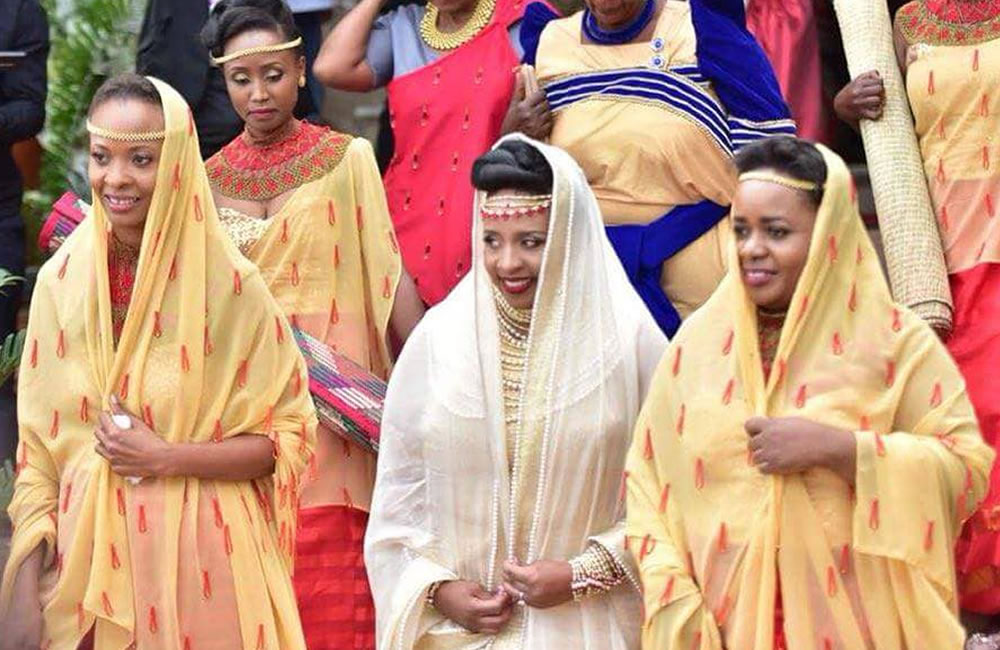
Traditional Marriages: Ankole Style
..among the Bahima (section of the Banyankole) girls who were about the age of marriage were forced to feed on milk until they were very heavy. “They could barely walk,” an Ankole elder once joked during an introduction ceremony.
One of the few remaining spectacular cultural things to talk about the Banyankole of South-Western Uganda is their culture-rich marriage ceremony of the once very prestigious lake kingdoms of the present day Great Lakes Region.
Because of influence from other cultures and lack of a cultural institution to ensure continuity of the culture following the abolishment of the Ankole monarchy in 1966 by the then Uganda Prime Minister Apollo Milton Obote, other cultures died out.
The traditional marriage has despite this influence survived the test of time. Although a few things could have changed because of religion and modernity, many Banyankole still embrace their traditional marriages because the elders still emphasize and control cultural marriage.
Indeed, many people intending to marry usually go for consultations from elders. So, what are the key spectacular elements of the Ankole marriage?
Marriage Arrangements:
The common thread in the Ankole marriage like many African traditional marriages is to create closeness to the bridal family. This is done through a third party called the Kateraruume (literally meaning somebody who will remove the dew from the path).
Even today when couples go for the official introduction and marriage after they have been co-habiting, this go between is key in initiating the marriage negotiations.
The Kateraruume is a highly respected person representing the groom’s interests and is charged with facing the bride’s family and ensuring that the bride’s family is willing to accept the groom’s family to formally discuss the marriage.
In case the proposal is endorsed, the man’s family approaches the girl’s family with the Kateraruume leading them there. At the home of the bride’s family, the go-between knocks at the gate and is invited in with the groom entourage after some teasing. The entourage usually comes with beer.
The Kateraruume then indicates to the girl’s marriage panel that he is on a marriage mission. The go-between then explains his mission and is asked many questions by the girl’s family. Later, they discuss the marriage payments, which can be picked anytime after the two families have agreed, sometimes on that same day.
This is followed by preparations for marriage. In Ankole tradition, the marriage payment included cattle, which may go to over 10. These gifts are presented to the bride’s family symbolizing the ability of the groom to take care of his woman.
The bride and groom to be:
During this ceremony, the bride and the groom are not party to the discussions. The bride is usually hidden while the groom has to keep quiet throughout the discussions and wait for the outcome. In this case however, the groom-to-be is ‘king’ because everything is done on his behalf.
In traditional Ankole society, a man marries a woman. A woman never marries a man. It is taboo if a woman seeks out a man’s hand in marriage. Also, it is the man who chooses not the woman. Therefore the woman has to be ‘marry-able’.
Unlike today where men treasure small sized women for marriage (I hope you have heard of words like portables and songs like obukazi obutono bulimu ekyama– “those small women last longer” or literally “those small women have years in them”), in the Ankole tradition, slim girls were unfit for marriage.
That is why among the Bahima (section of the Banyankole) girls who were about the age of marriage were forced to feed on milk until they were very heavy. “They could barely walk,” an Ankole elder once joked during an introduction ceremony.
The Give Away (Okuhingira)
Unlike today where the men feel cheated by paying bride price, in the typical Ankole tradition, a groom gains from the marriage.
Actually, the gifts (the emihingiro) that the bride comes with sometimes are more than those paid by the groom as bride price. For example, among the Bahima-Banyankole, the aunties and uncles give cows to the bride during the kuhingira.
Younger girls and boys called the enshagarizi then escort the bride to the groom’s place after the blessings from the elders. Today, the groom’s side has to organise the transport for these people because they are very important for any marriage ceremony in Ankole. Going back is not necessarily the role of the bridegroom.
After the kuhingira, the bride’s side is still is control though. The bride according to the culture is not supposed to do any work until the cultural initiation. This is done after about ten days from the giveaway day.
During this initiation, the bride is made to light fire in the kitchen in the tradition called okukoza omumuriro (helping the bride to start toughing fire).
Because of modernity however, some brides have left the bridal room (orusika) the day after marriage to continue looking for a living in the competitive world where every minute lost contributes a lot to poverty in the homes.
So, many people in Uganda may find it hard to understand the Ankole culture and language but many know the words okwanjura, okushwera and okuhingira irrespective of the language they speak.
